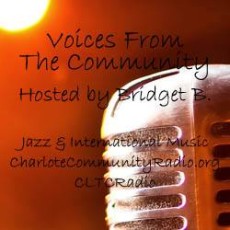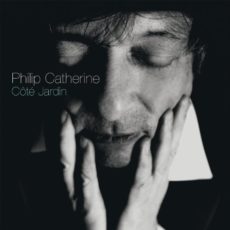
Daily Dose Of Jazz…
Philip Catherine was born on October 27, 1942 in London, England to English/Belgian parents and a grandfather who was first violinist in the London Symphony Orchestra. Having an ear for music early on, he picked up the guitar after hearing George Brassens and began listening to jazz.
He soon got the opportunity to play with some of those musicians when performing in Belgium, where he was residing at the time. In the 1960s he was a member of the Jean-Luc Ponty Quintet and during this period he was at the forefront on the European jazz scene performing and recording with Lou Bennett, Billy Brooks, Edgar Bateman, John Lee, Gerry Brown, Larry Coryell, Alphonse Mouzon, Charlie Mariano, Kenny Drew and Tom Harrell, among others.
Recording his debut solo album Stream in 1971 for Warner Bros. Records, the following year Philip collaborated with John Scofield, Ran Blake, George Benson and other musicians in Boston, Massachusetts. By early 1976 he replaced Jan Akkerman in the Dutch rock group Focus, recording on one album Focus con Proby, featuring American singer P. J. Proby.
The 1980s Catherine played extensively with the Chet Baker Trio and is featured on several of Baker’s albums. He went on to play with Charles Mingus, who dubbed him “Young Django”, as well as collaborations with Dexter Gordon, Richard Galliano, Niels-Henning Ørsted Pedersen, Stéphane Grappelli, Toots Thielemans, Robert Wyatt, Klaus Doldinger, Buddy Guy, Karin Krog, Carla Bley, Mike Mantler and Joachim Kühn as well as others too numerous to list.
He won the first Belgian Golden Django in 1995 and is considered the grandfather of Belgian jazz for his approach, sound, emotional lyricism and expression that is both important and influential. Guitarist Philip Catherine continues to perform on the now very active Belgian jazz scene as well as record and tour worldwide.
More Posts: guitar
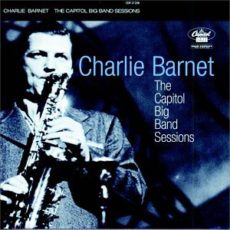
Daily Dose Of Jazz…
Charlie Barnet was born Charles Daly Barnet on October 26, 1913 in New York City. His parents divorced when he was two and he was raised in well-to-do surroundings by his mother and her grandparents. His grandfather was Charles Frederick Daly, a vice-president for the New York Central Railroad, banker and businessman. He attended various boarding schools, both in the New York and Chicago areas, learning to play piano and saxophone as a child. He was often found leaving school to listen to music and to try to gain work as a musician.
By sixteen, Barnet had done road work with a Jean Goldkette satellite band and was in New York, where he joined Frank Winegar’s Pennsylvania Boys on tenor saxophone. Always restless, by 1931 he had relocated to Hollywood and appeared as a film extra while trying to interest local bandleaders in hot music, which was increasingly unpopular due to the Great Depression. By late 1932 he was 18 and returning east, where he persuaded a contact at CBS’ artist bureau to try him out as an orchestra leader.
Charlie began recording in 1933, during an engagement at New York’s Park Central Hotel, but was not a great success for most of the 1930s. Regularly breaking up his band and changing its style by early 1935 he attempted to premiere swing music at New Orleans’ Hotel Roosevelt. However, Louisiana’s Governor Huey Long, disliking the new sound, had the band run out of town, arranged with Joe Haymes to take several of his now-jobless sidemen, and he went to Havana, Cuba as an escort to well-to-do older women.
1936 saw another swinging Barnet edition featuring the up-and-coming vocal quartet The Modernaires but this too quickly faded from the scene. The height of Barnet’s popularity and his first really permanent band came between 1939 and 1941. It was a period that began with his hit version of the Ray Noble tune Cherokee arranged by Billy May. 1944 saw him with another big hit with Skyliner. During his swing period his orchestra included Buddy DeFranco, Roy Eldridge, Neal Hefti, Lena Horne, Barney Kessel, Dodo Marmorosa, Oscar Pettiford, Art House, Maynard Ferguson, Doc Severinsen, Clark Terry and trumpeter Billy May was his arranger before joining Glenn Miller in 1940.
He was one of the first bandleaders to integrate his band; the year is variously given as 1935 or 1937. He was an outspoken admirer of Count Basie and Duke Ellington. Ellington recorded the Charlie Barnet composition In a Mizz. In 1939, Basie lent Barnet his charts after Barnets’ had been destroyed in a fire at the Palomar Ballroom in Los Angeles, California. Throughout his career he was an opponent of syrupy arrangements, however, in the Billy May song The Wrong Idea, he lampooned the “sweet” big band sound of the era.
Barnet penned an autobiography The Swinging Years where he noted the orchestra was a notorious party band where drinking and vandalism were not uncommon. He had several hits across America and in Europe during the late 1940s, thanks to the U.S. Armed Forces Network powerful twin 100 kW transmitters stationed in Munich, Germany.
By 1947, he started to switch from swing music to bebop and in 1949 he retired, apparently because he had lost interest in music. He was able to retire when he chose because he was one of the few heirs in a very wealthy family. He occasionally returned from retirement for brief tours but never returned to music full-time. Tenor, alto and soprano saxophonist, composer and bandleader Charlie Barnet passed away from complications of Alzheimer’s disease and pneumonia on September 4, 1991 in San Diego, California.
![]()
More Posts: saxophone
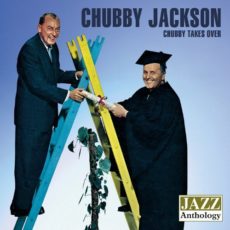
Daily Dose Of Jazz…
Chubby Jackson was born Greig Stewart Jackson on October 25, 1918 in New York City and began at the age of seventeen as a clarinetist but soon after changed to bass.
In the 1950s, Jackson worked as a studio musician, freelanced, and hosted some local children’s TV shows: Chubby Jackson’s Little Rascals and The Chubby Jackson Show, from 1959 to 1961. He briefly served as the fourth and last emcee of WOR TV’s Looney Tunes Show/The Chubby Jackson Show weekday afternoons, the first six months of 1962.
Jackson performed and/or recorded over the course of his career with Louis Armstrong, Raymond Scott, Jan Savitt, Henry Busse, Charlie Barnet, Oscar Pettiford, Charlie Ventura, Lionel Hampton, Bill Harris, Woody Herman, Gerry Mulligan, Lennie Tristano and others.
Double-bassist Chubby Jackson, who was inducted into the Big Band and Jazz Hall of Fame and is best known for his spirited work both with the Herman bands and as a leader of his own small and big bands, passed away on October 1, 2003 in Rancho Bernardo, California at the age of 84.
Sponsored By
Voices From The Community
![]()
More Posts: bass
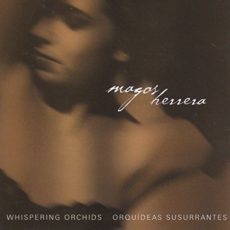
Daily Dose Of Jazz…
Magos Herrera was born in Mexico City, Mexico on October 24, 1972 and started her career as a vocalist upon graduating in 1992 from the Musicians Institute in Los Angeles. Following this, she continued her studies under Russian opera teacher Konstantin Jadan, perfecting her vocal technique, and later moved to Boston, for specialized instruction on contemporary improvisation.
She released five albums between 2000 and 2006 while living in Mexico City, then moved to New York City in 2008 and promptly became part of the local scene after a highly successful performance at the New York Winter Jazz Festival. She has recorded and participated in multiple projects including the album Stones World: The Rolling Stones Project II with saxophonist Tim Ries, The Music of Chick Corea with pianist Elio Villafranca and for contemporary composer Paola Prestini for VIA project, among others.
In 2009 Herrera released her album Distancia on the Sunnyside Records label to wide critical acclaim, co-produced by Tim Ries and featuring pianist Aaron Goldberg and guitarist Lionel Loueke. She has worked with John Patitucci, Luis Perdomo, Adam Rogers, Tim Hagans, Rogerio Boccato, and Alex Kautz, Javier Limón, Fito Páez, Eugenia León, Grégoire Maret and Chabuco. She has toured globally at clubs and jazz festivals throughout the Americas, Europe and Asia.
As an educator Magos teaches vocal technique and improvisation at the Fermatta Music Academy and DIM Music School in Mexico City. She has been a guest professor for master classes and clinics at Berklee College in Boston, Berklee Latino in Colombia, Central College in Pella, Iowa, Miami Dade College, Kula Lumpur Music Academy, Escuela Superior de Música in Mexico City, JazzUV in Xalapa, and held academic residencies in Swarnabhoomy Academy of Music in Tamil Nadu, India, the Carnegie Hall Musical Exchange Program in 2012, and the Langnau Jazz Camp in Switzerland in 2016.
Jazz singer-songwriter, producer and educator Magos Herrera has been nominated and received several awards. Currently based out of New York City, she is continuing to expand her 20-year career that embraces the Spanish, English, and Portuguese languages.
Give A Gift Of Jazz – Share
![]()
More Posts: vocal
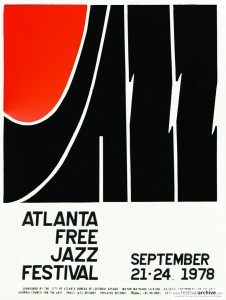
Atlanta Jazz Festival… 1978
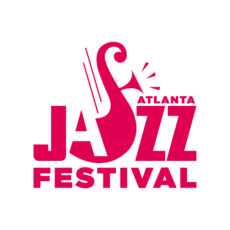
More Posts: festival



